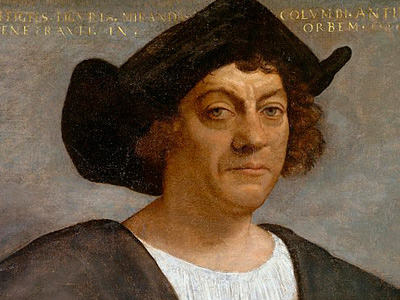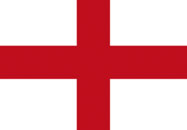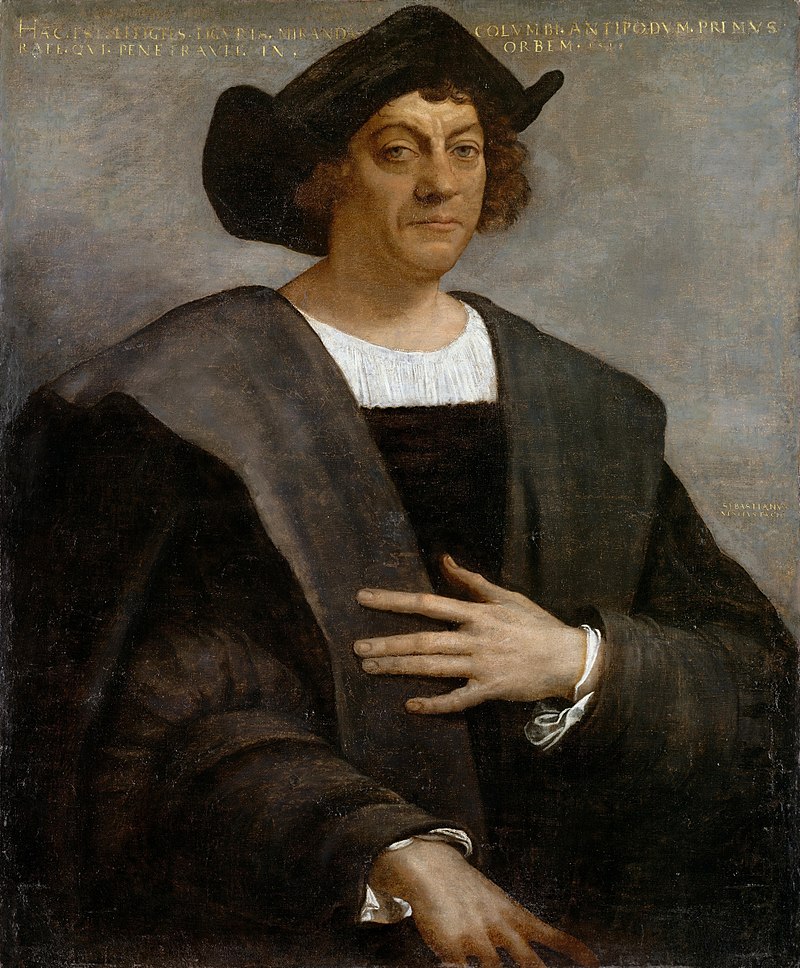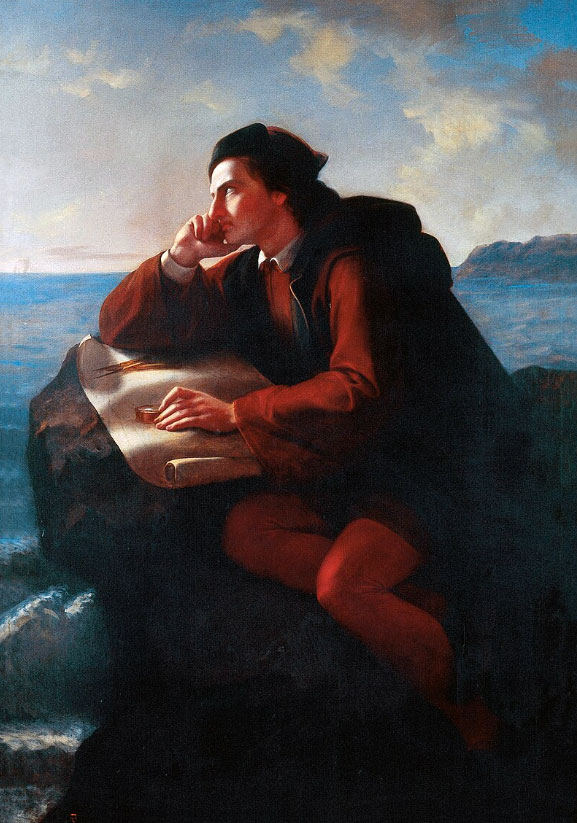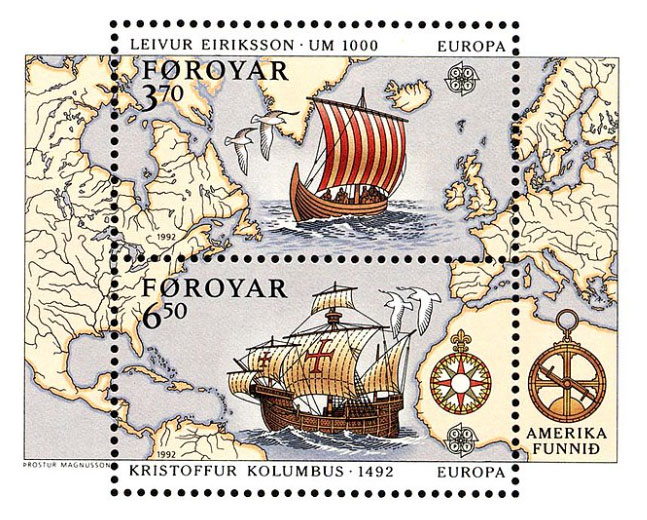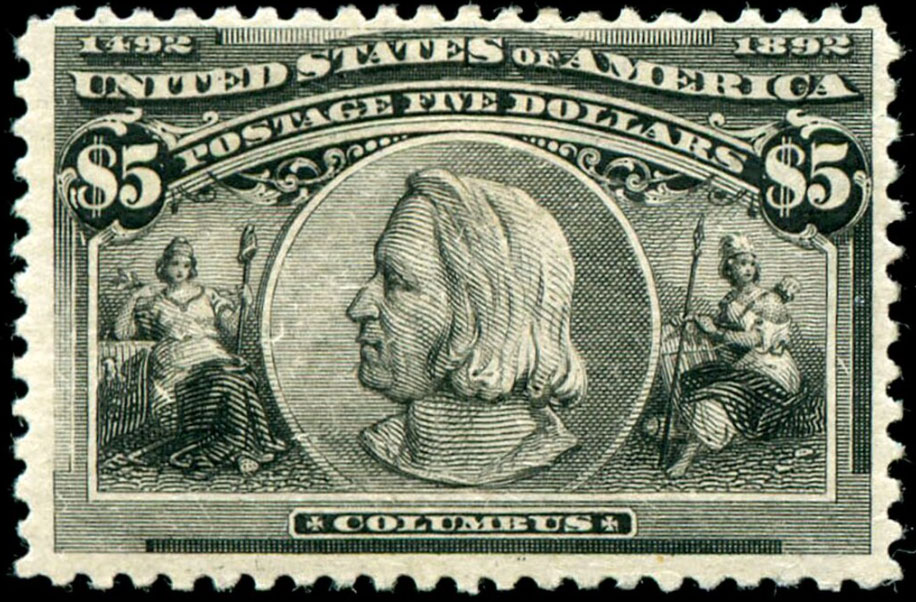Christopher Columbus (1451-1506)
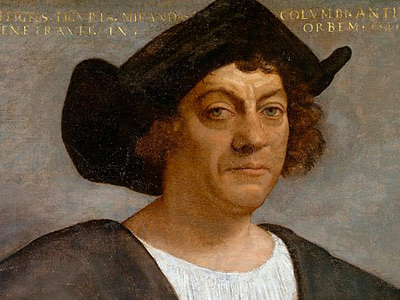
Third Voyage
According to the abstract of Columbus's journal made by Bartolomé de Las Casas, the objective of the third voyage was to verify the existence of a continent that King John II of Portugal suggested was located to the southwest of the Cape Verde Islands. King John reportedly knew of the existence of such a mainland because "canoes had been found which set out from the coast of Guinea [West Africa] and sailed to the west with merchandise."
On 30 May 1498, Columbus left with six ships from Sanlúcar, Spain, for his third trip to the New World. Three of the ships headed directly for Hispaniola with much-needed supplies, while Columbus took the other three in an exploration of what might lie to the south of the Caribbean islands he had already visited, including a hoped-for passage to continental Asia.
Columbus led his fleet to the Portuguese island of Porto Santo, his wife's native land. He then sailed to Madeira and spent some time there with the Portuguese captain João Gonçalves da Camara, before sailing to the Canary Islands and Cape Verde. As he crossed the Atlantic, Columbus discovered that the angle between North as indicated by a magnetic compass and North as measured by the position of the pole star changed with his position (a phenomenon now known as "compass variation"). He would later use his previous measurements of the compass variation to adjust his reckoning.
After being becalmed for several days in the doldrums of the mid-Atlantic, Columbus's fleet regained its wind and, dangerously low on water, turned north in the direction of Dominica, which Columbus had visited in his previous voyage. The ships arrived at King John's hypothesized continent, which is South America, when they sighted the land of Trinidad on 31 July approaching from the southeast. The fleet sailed along the southern coast and entered Dragon's Mouth, anchoring near Soldado Rock where they made contact with a group of native Amerindians in canoes. Columbus then landed on Trinidad at Icacos Point (which he named Punta de Arenal) on 2 August. After resupplying with food and water, from 4 to 12 August Columbus explored the Gulf of Paria, which separates Trinidad from what is now Venezuela, near the delta of the Orinoco River. He then touched the mainland of South America at the Paria Peninsula.
Exploring the new continent, Columbus correctly interpreted the enormous quantity of fresh water that the Orinoco delivered into the Atlantic Ocean as evidence that he had reached a large landmass rather than another island. As he sailed the Gulf of Paria, he observed the diurnal rotation of the pole star in the sky, which he erroneously interpreted as evidence that the Earth was not perfectly spherical, but rather bulged out like a pear around the new-found continent. He also speculated that the new continent might be the location of the biblical Garden of Eden. He then sailed to the islands of Chacachacare and Margarita. He sighted Tobago (which he named "Bella Forma") and Grenada (which he named "Concepción").
In poor health, Columbus returned to Hispaniola on 19 August, only to find that many of the Spanish settlers of the new colony were in rebellion against his rule, claiming that Columbus had misled them about the supposedly bountiful riches of the New World. A number of returning settlers and sailors lobbied against Columbus at the Spanish court, accusing him and his brothers of gross mismanagement. Columbus had some of his crew hanged for disobedience. He had an economic interest in the enslavement of the Hispaniola natives and for that reason was not eager to baptize them, which attracted criticism from some churchmen. An entry in his journal from September 1498 reads: "From here one might send, in the name of the Holy Trinity, as many slaves as could be sold ..."
Columbus was eventually forced to make peace with the rebellious colonists on humiliating terms. In 1500, the Crown had him removed as governor, arrested, and transported in chains to Spain. He was eventually freed and allowed to return to the New World, but not as governor.
HISTORY
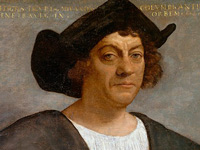
RESOURCES
This article uses material from the Wikipedia article "Christopher Columbus (1451-1506)", which is released under the Creative Commons Attribution-Share-Alike License 3.0.
© Stories Preschool. All Rights Reserved.
